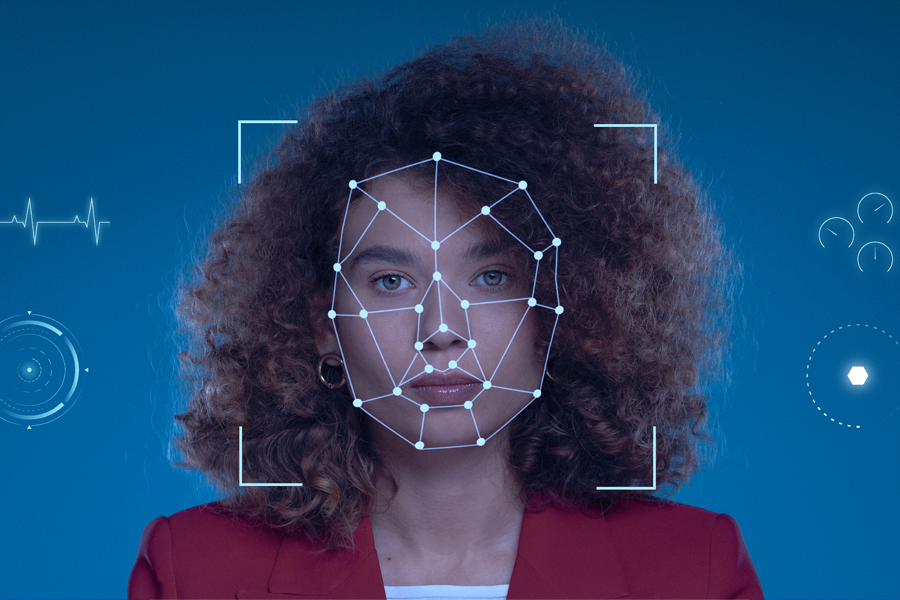By 2022, the best image and facial recognition trends will take lead in various sectors.
Facial recognition is a system that can recognize and authenticate a person by looking at their face. It uses a person’s facial characteristics to collect, analyze, and compare patterns. In still pictures and films, image recognition refers to technology that can recognize and identify persons, places, objects, logos, emotions, and other factors. Image recognition is a branch of computer vision that uses AI and machine learning to recognize objects. Facial recognition has gained popularity in recent years as a result of the advantages it provides over traditional security techniques. By 2025, the facial recognition market is estimated to be worth US$10.07 billion. One of the most prevalent types of biometric identification is facial recognition. Top image and facial recognition trends for 2022 are mentioned below.

Personalized Customer Experience
Personalized customer experience is something that we can anticipate more and more businesses to embrace, and biometrics may help with this. Customers will be able to receive tailored content based on their choices once they can log in using their face. One of the most important areas to implement a personalized customer experience is online education.
E-Commerce and Digital banking
Issues of identification and authentication constitute a concern in the realm of digital services. It’s difficult to trust someone who isn’t physically present. Traditional knowledge-based techniques have already been put to the test, and they aren’t the answer to internet security. Passwords and emails, for example, are vulnerable to hackers and difficult to remember. Something more robust is required for failsafe security, and one of the options that experts predict will eventually replace current approaches is biometrics-based on facial characteristics. Facial recognition technology is, without a doubt, becoming more widespread in the internet sector, and it is expected to be used in digital transactions for fraud prevention.
Airport Security and Border Security Management
Face authentication technology has already been used at the Atlanta airport by Delta Airlines. Customers will be able to check-in, check their bags, and board a plane using just their faces. Despite reservations about the use of facial recognition for airport identification, 73% of passengers indicated they would feel comfortable utilizing the technology after a single pass-through of Delta’s curb-to-gate face recognition system.
Health-Care
Given the ongoing threat of both physical and digital security breaches, the healthcare industry is investing in facial recognition technology to improve security and fraud prevention. Biometric technology is already being utilized in the health industry for anything from avoiding health insurance fraud to identifying illnesses. Tracking patients’ medication history, identifying hereditary illnesses, and avoiding health insurance fraud are among the expected facial recognition advancements in the health care industry in 2022.
Payments without Using a Credit Card
With safe systems like AliPay and WePay, Chinese payment systems are already ahead of the rest of the globe. Face identification provides more useful data to merchants and can eliminate shopping cart restrictions. In 2022, Amazon and other major e-commerce businesses are anticipated to launch their form of facial recognition for payments.
Travel and Tourism
Forget about locking yourself out of a hotel room or carrying your key card around with you. Customers will be able to register through their faces while reserving a hotel, whether in person or over the phone. The check-in time is decreased by 40% at hotels that utilize facial verification technology. From flight booking to resort check-in, facial recognition technology is likely to become commonplace.
Smart Technologies
Smartphones have been a significant client area where facial recognition technology is being used since Apple launched FaceID. Facial recognition is becoming more common in other smart technologies, such as smart TVs and smart home security systems.
Digital Advertising
Facial recognition is being used to identify individuals and their demographics to provide deals and information customized to their demographics as retail shops strive to personalize consumer experiences. This may be divisive, but this tendency is expected to peak around 2022.
Image Tagging
Image tagging is one of the first uses of image recognition in organizations, but as more firms embrace AI to improve the user experience or internal operations, its usage will continue to rise. The automated assignment of appropriate tags or keywords to large collections of pictures and videos is known as image tagging. A deep learning model is taught to evaluate the pixel content of images, extract their characteristics, and recognize items of interest for this to happen. It’s a cost-effective and time-saving solution for businesses that deal with large volumes of picture content from a variety of sources.
Visual Search
Searching for a picture using a comparable image is known as a visual search. Users can use the technology to search for and locate goods that are similar to those they captured with their camera or obtained from the internet. The search for pictures as we know it now, on the other hand, is based on the correctness of the image text description. Where word search fails, visual search succeeds.
(Source: Analytics Insight)

